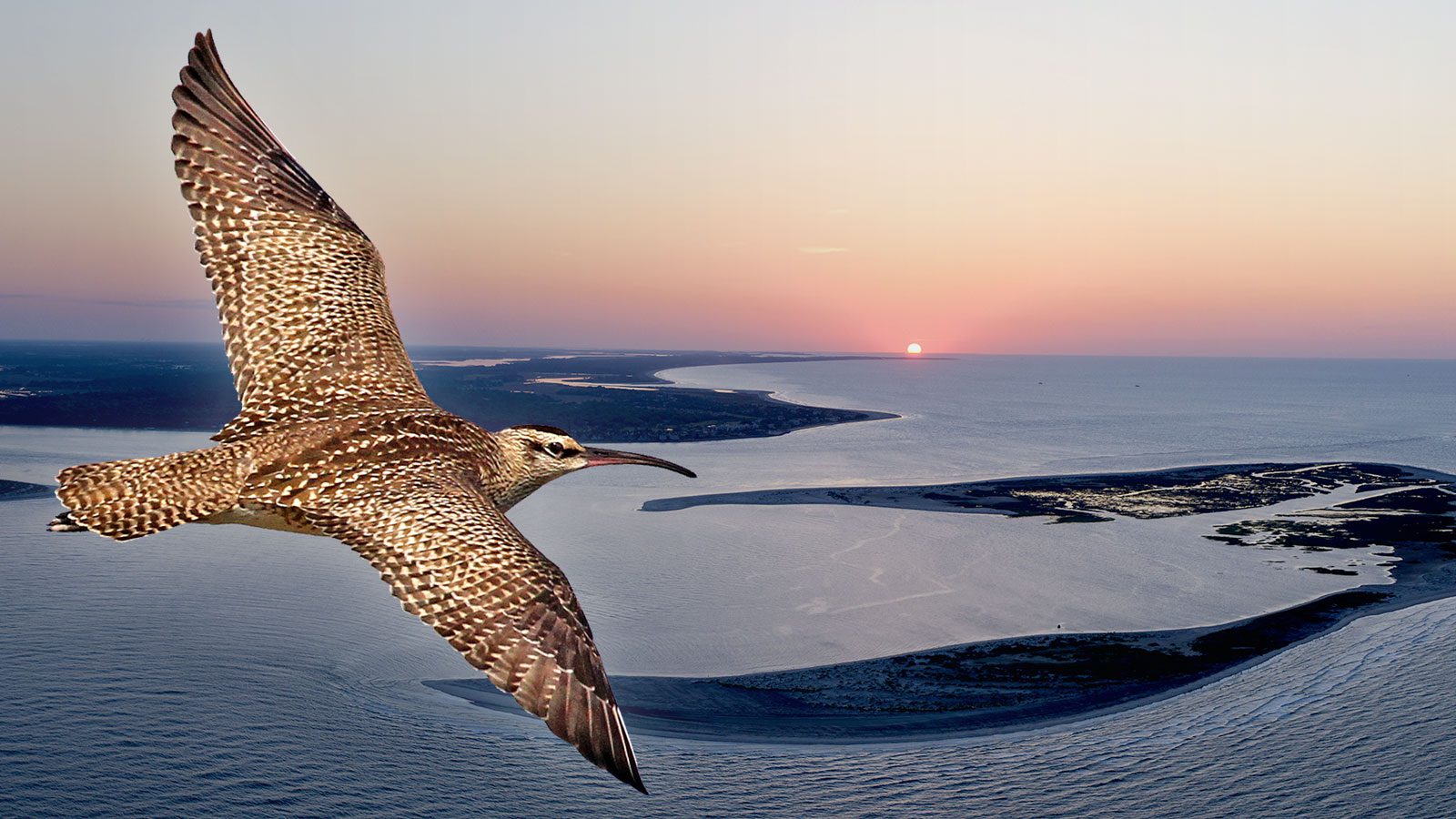
From the Autumn 2024 issue of Living Bird magazine. Subscribe now.
In May 2024, officials from the South Carolina Department of Natural Resources announced a complete, indefinite closure of Deveaux Bank—a small sandy island just off the coast of Charleston, at the mouth of the Edisto River. It’s a long-awaited boost for the thousands of Brown Pelicans that nest there, along with Black Skimmers and several species of terns. Deveaux is also a key stopover site for migratory shorebirds like Red Knot, Piping Plover, and, famously, Whimbrel.
Deveaux Bank made national news in 2021 when scientists announced that around 20,000 Whimbrels—more than half of the eastern North American population—use the horseshoe-shaped spit of sand and vegetation as a way station each fall as they travel from Arctic nesting grounds to South America. Upon the 2021 announcement, former Cornell Lab of Ornithology director John Fitzpatrick told the New York Times: “This was one of the most mind-blowing discoveries in the history of 20th- and 21st-century ornithology.”
Because of its outsized importance to different birds at different times of year, concerned citizens and conservationists have lobbied to close Deveaux Bank to boat landings in the past. New statewide beach regulations and increased patrols around Deveaux Bank started in 2022, but efforts to close the area completely were hampered by local pushback from people who had boated to the bank for decades for fishing and swimming.
Then in August 2023, the South Carolina coast was hammered by Hurricane Idalia, and later that year by a December nor’easter. By the time spring rolled around, the 200+ acre Deveaux Bank had been decimated: a scant 22 acres remained above the high-tide line.
The new reality for Deveaux Bank prompted local leaders and the SCDNR to announce a total closure of the remaining sandbar, citing the extreme reduction in area and its importance as bird habitat.
In a May news release, SCDNR announced: “In light of the magnitude of Deveaux’s [nesting Brown Pelican] colony and the fact that the nesting birds are squeezing into ever-shrinking habitat, the agency is temporarily closing the entirety of the sanctuary to safeguard a colony that is critical to pelican reproduction not only for South Carolina but also for the region.”
Felicia Sanders, the SCDNR biologist who first discovered the masses of migrating Whimbrels in 2017, says the timeline for the current closure is still uncertain: “Since this is the first year to close the entire island during the spring and summer, we are still figuring out how long it needs to remain completely closed. Other SCDNR-owned seabird sanctuaries are closed March 15 to October 15 … [to] protect immature pelicans as well as migrating birds.”
Sanders points out that shifting water currents at the mouth of the river have already helped Deveaux Bank accrete new land, so she thinks the sandy spit will continue to be a crucial migratory stopover spot for Whimbrels: “We went to Deveaux [during spring migration] and attempted to count Whimbrel roosting. The team counted 10,000 Whimbrel and guessed there could have been another 10,000 that roosted on a sand spit that has formed oceanward of Deveaux…. So we think there is still plenty of habitat.”

